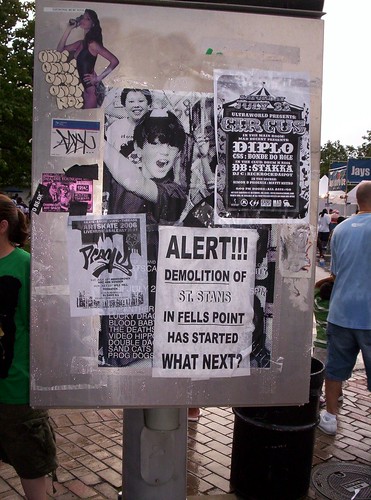"The Seven to Save" -- New Hampshire Preservation Alliance
Here's a new term: land-use-and-livability-planning.
According to the Boston Globe, the New Hampshire Preservation Alliance has launched an interesting program "Seven to Save." From the website:
Nominations for the Seven to Save list can be submitted by anyone - Preservation Alliance members, concerned citizens, non-profit organizations, neighborhood advocacy groups, and others. We need your help to let us know what historical properties are most endangered in your community. Seven to Save nomination forms may be downloaded by clicking here. Forms are also available at local historical societies, through town heritage commissions or by calling the Preservation Alliance at 603-224-2281. The deadline for submission is September 12, 2006; the Seven to Save list will be announced at an October event.
The Preservation Alliance will utilize the listing to educate and advocate for the preservation of these buildings, highlighting their historical and architectural significance, while also working to stimulate local discussion and problem-solving tactics. The Seven to Save program will also bring attention to broader issues of historic preservation in the state, such as abandonment of neighborhood schools and churches, demolition of barns, and effects of sprawl, to name a few.
________
This is interesting because more and more I write and advocate for neighborhoods making their own land use and livability plans, and for building the tools and infrastructure so that neighborhoods and organizations can take the steps necessary to address livability questions proactively.

There is a frustrating piece in the Sunday Post Outlook section about the conversion of a church in Baltimore to school, and the demolition of one or more properties on the grounds of the church campus, and the conversion of buildings to condominiums and perhaps the construction of new condominiums as well. See "Praying for Intervention," subtitled "Development Threatens Baltimore's Historic St. Stanislaus Church. There's a Better Choice for Its Fate."
Praying is worthless when it comes to the exchange value of place. You need to focus on the here and now...
The article makes the point that certain groups in the community were interested in working to create a museum in the church: "educating the public about the history, immigration and settlement of Baltimore's Polish and Slavic peoples; to serve as an urban cultural resource and facility for Fell's Point and Baltimore's waterfront communities."
But the community had no plan and no way to raise the money necessary to get control of the property.
I don't know if this is a good idea or not, but with a neighborhood plan, and support organizations, at least these kinds of ideas can be investigated.
The need then is for an infrastructure to support citizen and civic engagement around stabilizing and improving our communities, and to "stimulate local discussion and problem-solving tactics." Seven to Save seems to be a start.
Index Keywords: historic-preservation; civic-engagement; land-use-and-livability-planning



0 Comments:
Post a Comment
<< Home